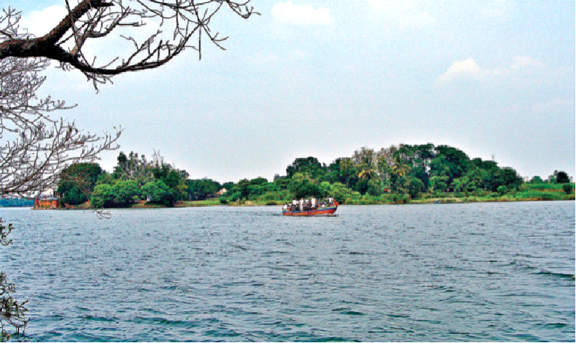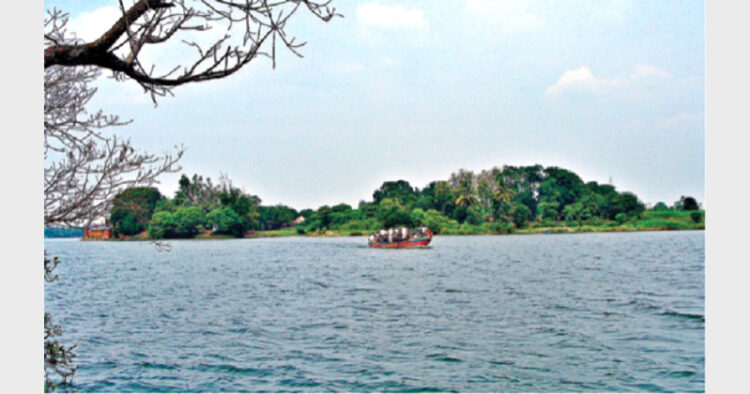 Centralised planning for developing decentralised irrigation infrastructure may be a robust solution for inter-state water problem without inviting potential environmental hazards resulted by bigger water projects
Centralised planning for developing decentralised irrigation infrastructure may be a robust solution for inter-state water problem without inviting potential environmental hazards resulted by bigger water projects
MK Sridharan
Water, lifeline provided by nature, is gaining importance in State affairs. Efficient management of water that includes processing, supply and distribution of water is a mandatory deliverable of public policy. Yet, water is being mismanaged in the midst of inevitable urbanisation and hype of development. Further, the electoral dynamics of Democracy is adding political element in the resolution of conflicts around water management as is seen in the recent protests in Goa against releasing water from Mahadayi River to Karnataka. The protests were in response to co-operative public stance exhibited by Manohar Parikkar in meeting requests from Karnataka BJP leaders. While Karnataka BJP leaders were compelled by Karnataka Congress, the Congress leaders of Goa were leading the protests in Goa against Parikkar.
The controversy around river waters is not restricted to Mahadayi or between Karnataka and Goa alone. Water disputes exist around a dozen major rivers across India in the post-Independent India. One of the biases of mainstream media revolves round river water disputes and is reflected in sensationalised reporting and instigating public mood towards protests and violence. Left-leaning anarchists in media and elsewhere have repeatedly projected water wars between states within India in last several decades. It is not coincidence that similar ideas are also being propped up in the context of India-China-Pakistan relationship.
Upstream vs DownstreamConsuming river water for any beneficial use such as irrigation, drinking water, industrial, recreation, recharging of ground water, ground water use, enhanced evaporation losses, or any other man-made action could affect the interests of an upstream state. Quality of water for the |
Inter-state rivers such as Cauvery, Godavari and Mahadayi are prone to disputes with riparian states contesting available river waters. Changing patterns of demographic density, expansion of cultivable land and storage facilities are causing significant changes to the flow of water in the river basin. When an upstream state builds a dam, the users of a downstream state may be severely affected. This is because, the annual rain in the river basin fluctuates over consecutive years around an average rain fall. While there may not be any major problem during years of good rains, during lean years, the upstream state may consume all the water and there may not be any water available to the downstream state. Similarly, when a downstream state builds a dam near the inter-state border of an upstream state, huge lands of the upstream state may be submerged. Any action of a riparian state such as planning an irrigation project and proposing to build a dam, could be a justification for another riparian state to raise an inter-state water dispute.
River Water DisputesMahadayi Dispute: Karnataka, the upstream state in this case, is proposing to store 7.5 TMC of water through barrages built in Kalasa-Banduri project. The project is intended to provide drinking water to Hubballi-Dharwad, Gadag, Bagalkot and some parts of Belagavi districts. Politically, Kalasa-Banduri project affects 25 Assembly constituencies of Karnataka assembly, across 11 taluks. Goa, the downstream state for Mahadayi, could be affected in theyear of less rainfall because of this storage by Karnataka. |
Article 262 of the Indian Constitution provides a role for the Central Government in adjudicating conflicts surrounding inter-state rivers that arise among the state governments. The Inter-state River Water Disputes Act, 1956 (IRWD Act), enacted under Article 262 of Constitution of India, provides a basis to resolve the water disputes that would arise in the use, control and distribution of an interstate river or river valley. This Act has undergone several changes and its most recent amendment took place in the year 2002. The IRWD act enables the Centre to establish a water tribunal for resolution of an inter-state river water dispute. River waters’ use is included in states jurisdiction. However, when a state contests a project of another state, the Union Government can step in and initiate resolution of disputes in the framework of IRWD act. The Centre can also make laws on regulation and development of inter-State rivers and river valleys when expedient in the public interest. When public interest is served, President may also establish an interstate council to inquire and recommend on the dispute that has arisen between the states of India. IRWD Act validates the previous agreements (if any) among the basin states to harness water of an interstate river. Currently, the Ministry of Water Resources, River Development and Ganga Rejuvenation is the apex body for formulation and administration of rules and regulations relating to the development and regulation of the water resources in India.
Till now, tribunals verdicts have been enacted for rivers Krishna, Godavari and Narmada. In Krishna tribunal verdict, the earlier agreements entered among the riparian states were abrogated. In Narmada case, there was no prior agreement among the riparian states. In case of Godavari, new agreements between the riparian states have been accepted by the tribunal and have been made part of its verdict. For the other inter-state river water disputes, tribunals have been set up and intermediate verdicts are available. However, the final verdict is not yet be pronounced and/or official Gazette notification is pending.
According to an analysis, the state governments are excessively dependent on rivers and are not taking effective action in harnessing rain waters through small irrigation projects. Urbanisation and rural development is destroying water preserving eco-system sustained over a very long period of time from ancient times till Independence. Increased rate of extraction of ground water through borewells in the last thirty years or so has
compounded the problem. Capitalisation of agriculture and globalisation of agricultural markets, rehashing of local governance from traditional panchayats to election based gram panchayats have contributed neglect of conservation of water. Bigger capital-intensive projects are conceived by State and Union Governments, often necessitating displacement of people. In many instances, the projects are funded by the World Bank and other international powers. Centralised bigger projects are bound to create differences among riparian states. Such differences between state governments is a fertile ground for divisive intra-state politics.
Bottom-up approach with decentralised initiatives by village panchayats is an impossibility in the present context due to lack of expertise and absence of co-ordination. Federal interpretation to Centre-State relationship is creating conflict in planning and execution of bigger developmental projects. Centralised planning for developing decentralised irrigation infra structure may be a robust
solution for inter-state water problem without inviting potential environmental hazards due to bigger water projects.
(The writer is a media analyst focusing on issues of current affairs)














Comments